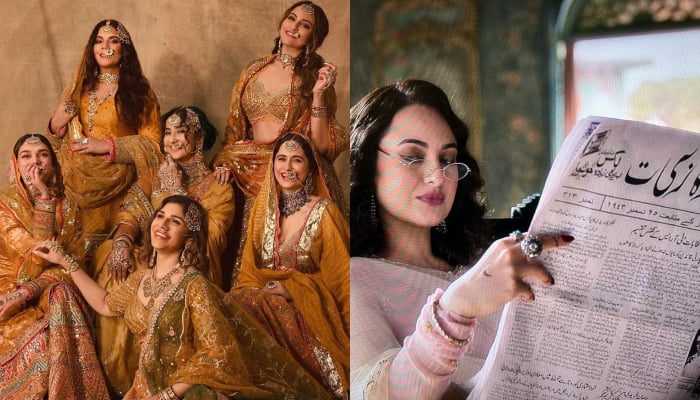The lavish and powerful lives of courtesans in the 1940s are portrayed in the Netflix sensation Heeramandi, but modern Pakistani sex workers in the dilapidated red-light district where the series is set don’t have as much glamour.
The eight-part series, titled The Diamond Bazaar in English, follows courtesans in pre-partition Lahore’s “royal neighbourhood,” which was once a center of political intrigue and culture. It depicts women mingling with aristocrats and forming powerful alliances and rivalries against the backdrop of India’s fight for independence from British rule, all with eye-catching Bollywood-style opulence.
However, 65-year-old Shagufta, a former prostitute, laughed in the abandoned remnants of the neighborhood. Using a pseudonym to conceal her identity, she told AFP, “This is not what Heera Mandi is like.” Shagufta clarified, “Now the girls just put their bodies on display.” “Heera Mandi is completely empty.”
Shagufta started dancing and being a prostitute at the age of twelve. Her family has seven generations of women who worked as tawaifs in Heera Mandi. The show exaggerates the wealth and glamour of the British-ruled era in which it is set, even though courtesans did command respect during the Mughal period for their artistic ability in dance and music. She remarked, “It was never like this.”
In its first three weeks on Netflix, the show garnered nearly 11 million views thanks to its dazzling jewels and swoon-inducing melodrama, in addition to a flurry of interest on social media. Pakistan and India have gained popularity due to videos on TikTok featuring influencers dressed in traditional costumes lip-syncing to the dialogue and songs from the show.
A sensual classical dance segment featuring a dancer’s elegant hip movements that are reminiscent of an elephant’s gait—which is revered as regal and dignified—went viral. Some vloggers have played in front of now-defunct grand brothels that were replaced by stores selling shoes and instruments, their crumbling art deco facades framing dingy alleyways.
It is debatable, though, if the show is merely adding titillation to already-existing barriers about sexuality in deeply conservative Pakistan or if it is actually breaking down those barriers. Cultural researcher Naveen Zaman is happy that Heera Mandi is receiving more attention. He said, “People are talking about the tawaif culture once again.” “So, they are actually beginning research on these subjects that were taboo in the past years.”
It’s a step toward bringing an awkward past back to life for Zaman. Here, he said, “old connections are being built.”
During the Mughal era, which spanned from the 1500s to the mid-1800s, courtesans were at the height of their power. The women’s power over the adoring local aristocracy threatened Victorian morality codes during British rule, and the “diamond bazaar” was relegated to a red-light district.
Sex work was further marginalized under President Zia ul-Haq’sdictatorship,which imposed strict Islamic reforms decades after Pakistan attained independence. Heera Mandi’s brothels were eventually closed in 2009 as a result of a police crackdown, and the music and dancing that sex workers used to amuse their clients was discontinued.
The Netflix series does not erase the stigma of being a sex worker from Heera Mandi for 38-year-old Noor, who also goes by a pseudonym. In contemporary Pakistan, the business of sex work is unsavory and uninspired, in contrast to the series, where the term “tawaif” conjures images of art and manners.
Noor was forced into prostitution as a child in order to support her family, and even her relatives shun her because of the work she does. “In this field, women are not respected and are not viewed as honorable. No matter how devout they get, they’ll never be taken seriously. She will always be referred to as a tawaif.”
“This place is still notorious because of Heera Mandi’s reputation, even though there is more sex work going on in other parts of the city,” she stated.
For fifteen years, Manjari Chaturvedi, a classical Indian dancer, has been fighting to restore the rich history of courtesan culture. She described the Netflix series, which “could have created a different narrative for women, who were stigmatized for many centuries for the work they did,” as a “missed opportunity” in her New Delhi studio.
“The most disheartening thing about a movie like this is that it prioritizes sexuality over art and perpetuates the same stigma,” Chaturvedi stated.
I am a dedicated student currently in my seventh semester, pursuing a degree in International Relations. Alongside my academic pursuits, I am actively engaged in the professional field as a content writer at the Rangeinn website.







